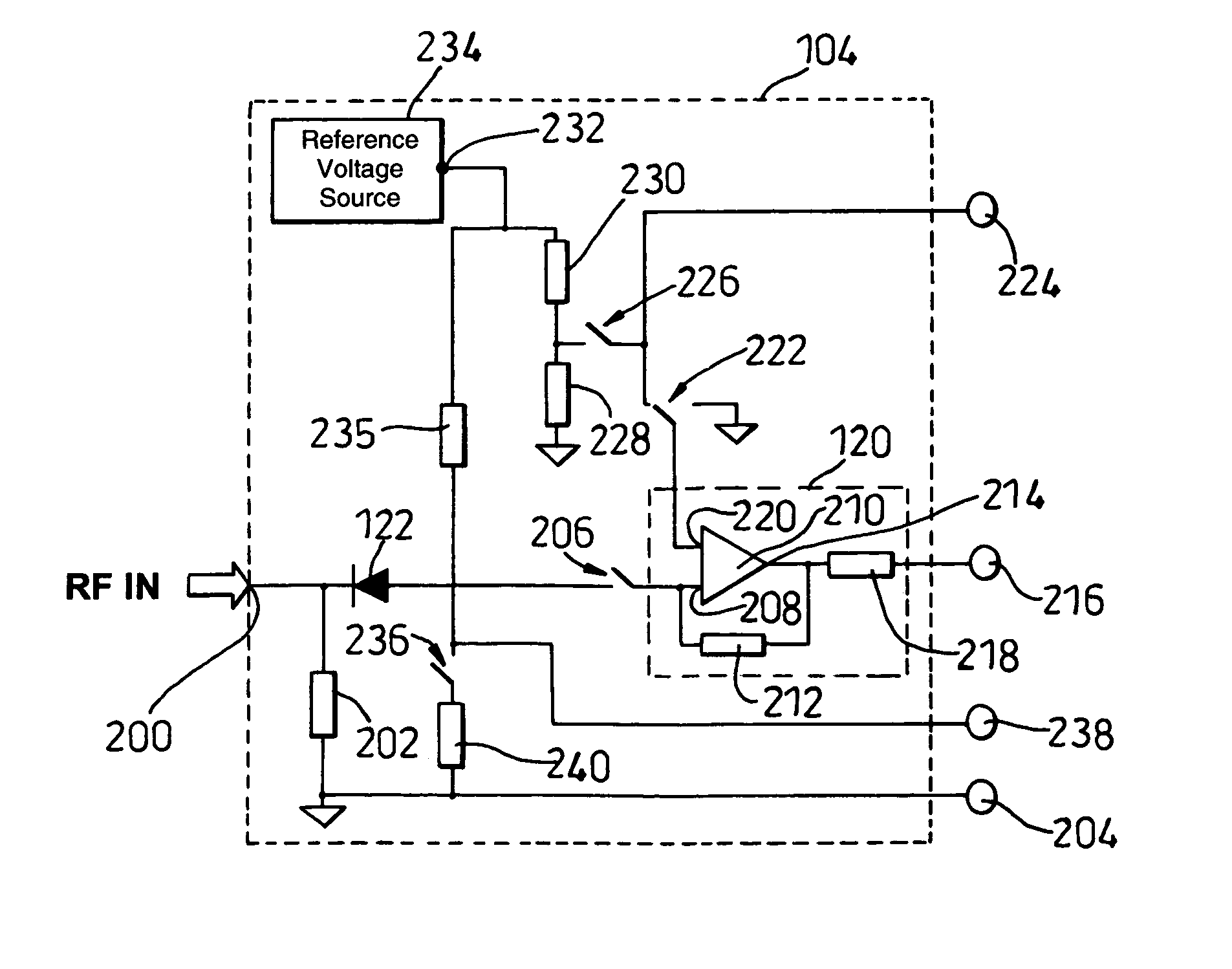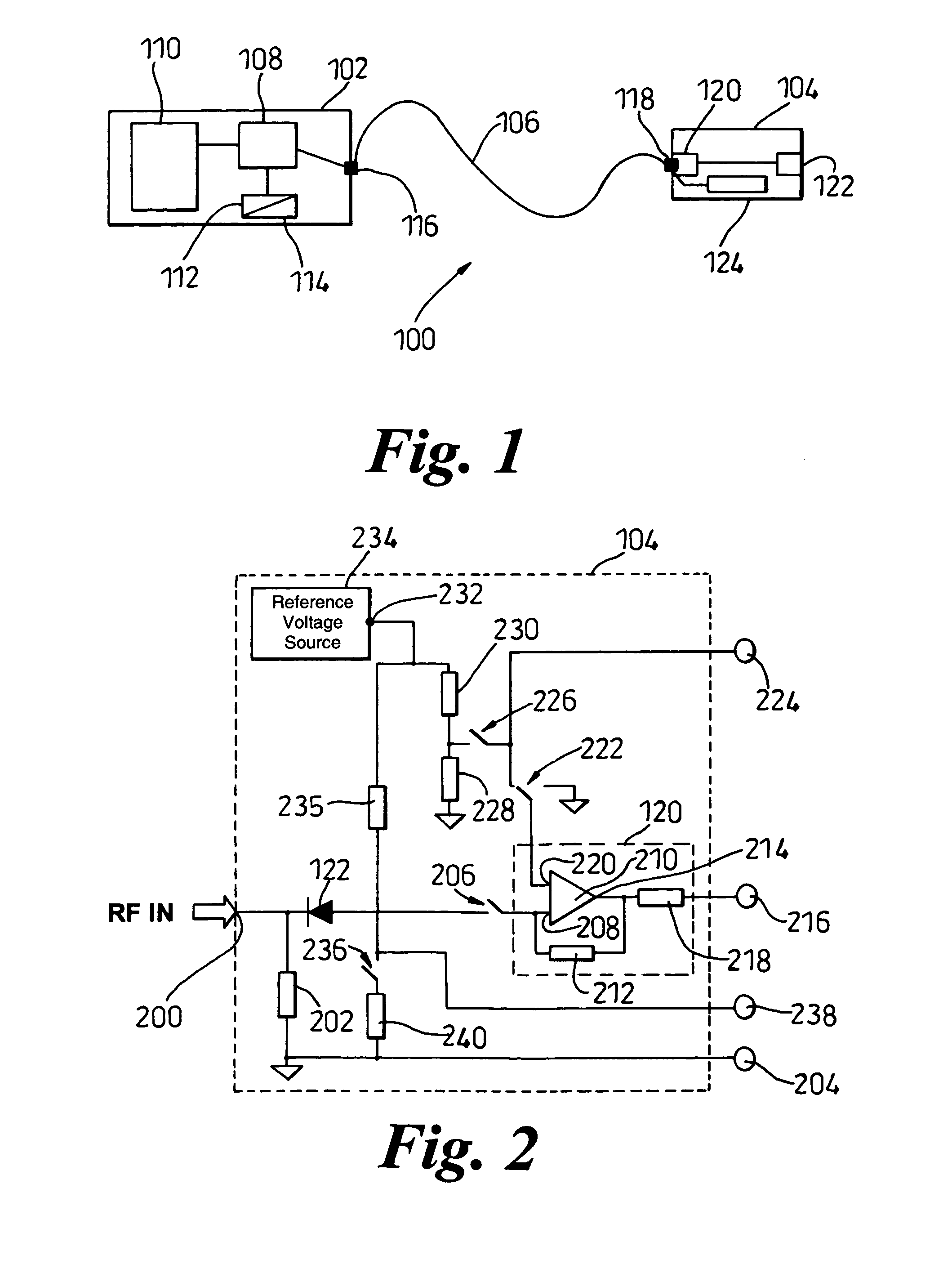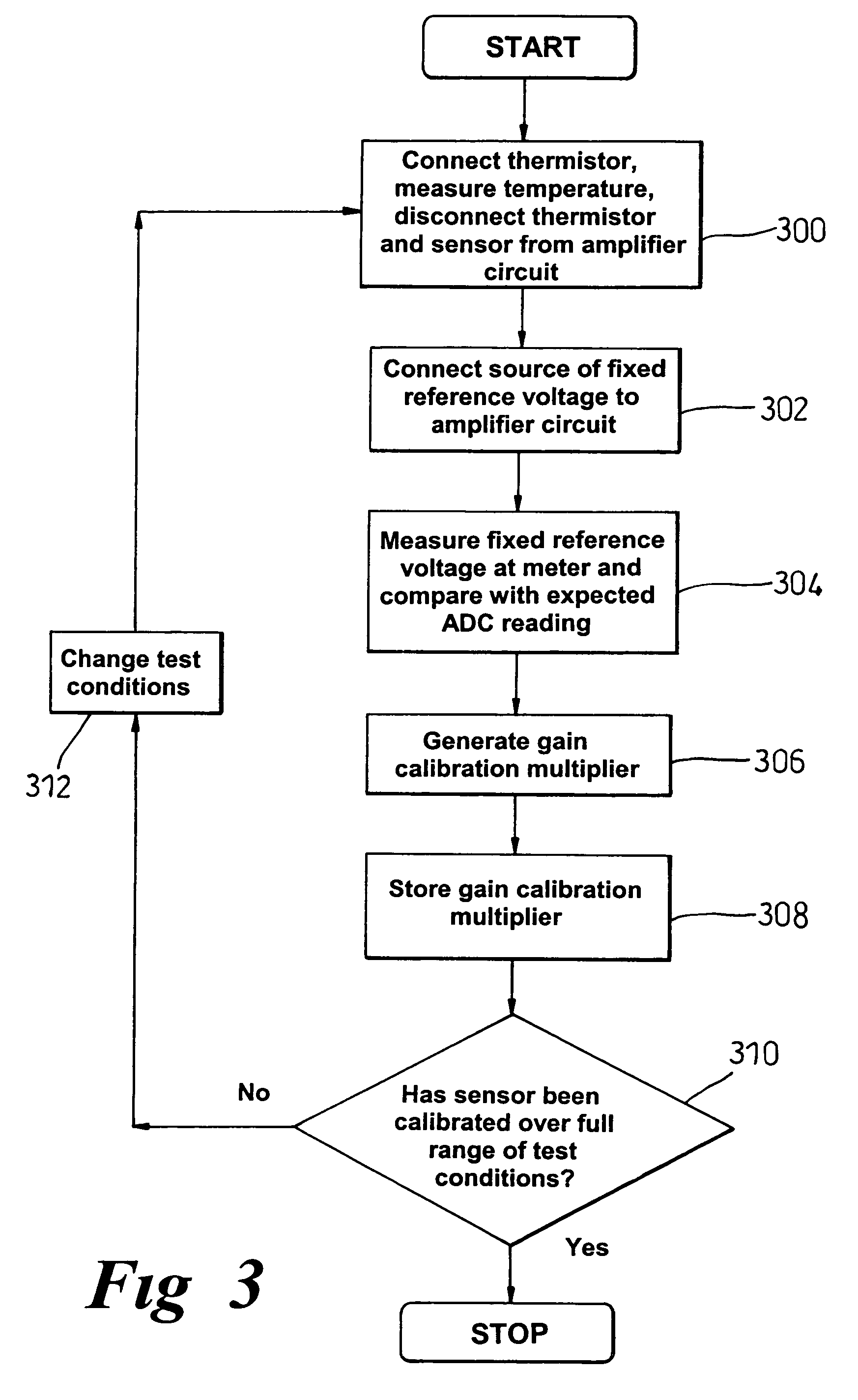Power measurement system
a technology of power measurement system and sensor, which is applied in the direction of power measurement by thermal methods, electric devices, instruments, etc., can solve the problems of inability to measurement errors can arise, and the cal’ solution of power measurement system cannot allow user-calibration changes of cables, so as to improve the accuracy and user convenience of instrumentation, and improve the verification of the correct operation of the sensing element. , the effect of increasing measurement confiden
- Summary
- Abstract
- Description
- Claims
- Application Information
AI Technical Summary
Benefits of technology
Problems solved by technology
Method used
Image
Examples
Embodiment Construction
[0033]Throughout the following description, identical reference numerals will be used to identify like parts.
[0034]Referring to FIG. 1, a power measurement system 100 comprises a meter unit 102 coupled to a sensor unit 104 via a cable 106. The meter unit 102 comprises a microprocessor 108 coupled to a display 110, a volatile memory 112, for example a Random Access Memory (RAM), and a non-volatile memory 114, for example a Read Only Memory (ROM).
[0035]The meter unit 102 also comprises an input / output port 116 to which a first end of the cable 106 is coupled. The meter unit 102 is a meter unit designed to work with specific types of sensor units and cables.
[0036]The sensor unit 104 comprises an output port 118 having a plurality of terminals. One of the plurality of terminals is a detected signal output pin (not shown in FIG. 1) coupled to an amplification circuit 120, the amplification circuit 120 being coupled to a sensor 122, for example, a zero biased diode. An EEPROM 124 is also ...
PUM
 Login to View More
Login to View More Abstract
Description
Claims
Application Information
 Login to View More
Login to View More - R&D
- Intellectual Property
- Life Sciences
- Materials
- Tech Scout
- Unparalleled Data Quality
- Higher Quality Content
- 60% Fewer Hallucinations
Browse by: Latest US Patents, China's latest patents, Technical Efficacy Thesaurus, Application Domain, Technology Topic, Popular Technical Reports.
© 2025 PatSnap. All rights reserved.Legal|Privacy policy|Modern Slavery Act Transparency Statement|Sitemap|About US| Contact US: help@patsnap.com



